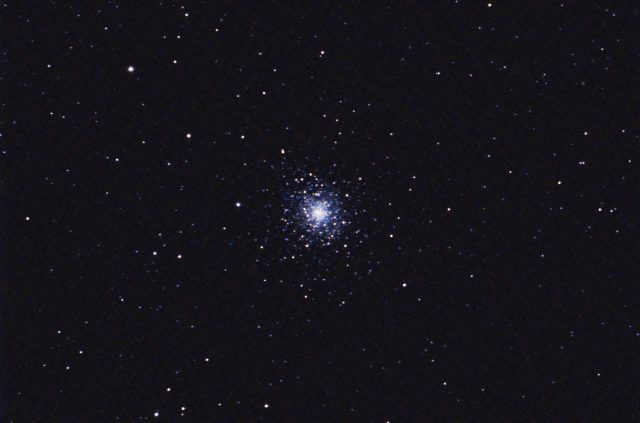
Quickie M3 set done for killing a little time.
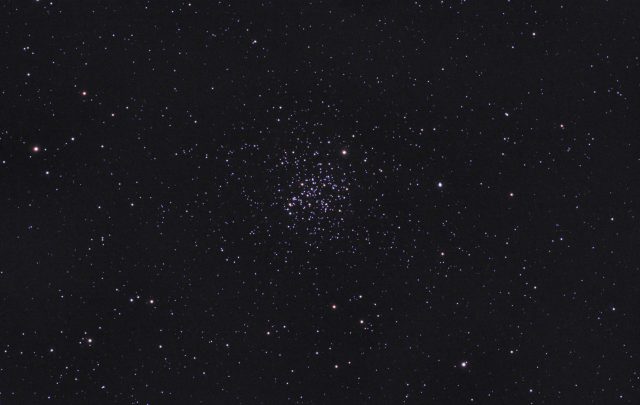
A quickie of M67. Marginal conditions with seeing and only average transparancy. But, you have to take what you can get in February. Hopefully, we’ll get more than just one or two nights of good skies in March.
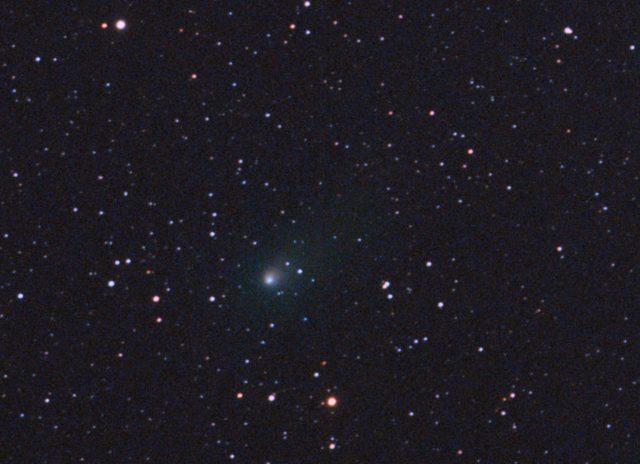
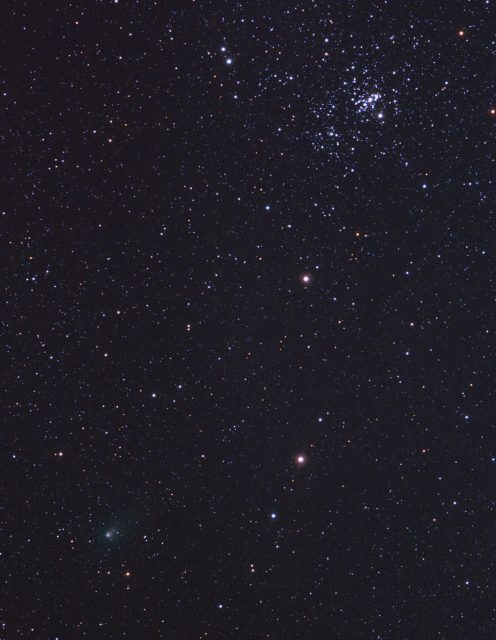
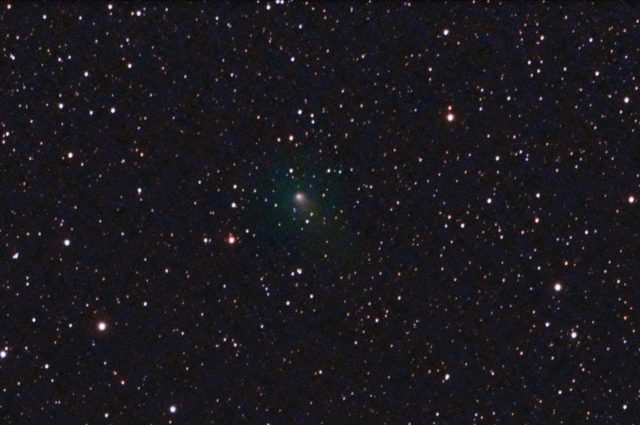
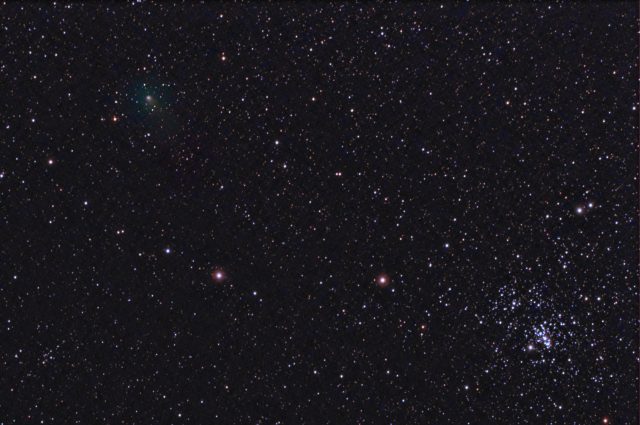
Here is an image of a comet that is big and bright enough to make some interesting images, especially when it passes near objects like the Double Cluster. I missed the closest approach of these two due to weather and other factors, but at least I got the parting shot of them together.
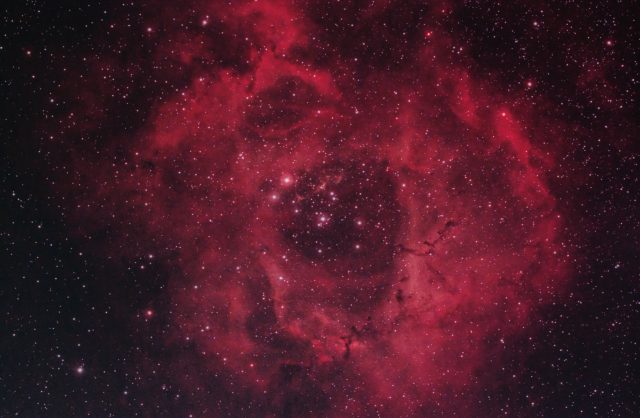
I was surprised how well this came out with only about an hour of data. I was after galaxies this night and I only took this to kill time. Even the 33 minutes worth I posted initially looked half-decent. I will have to devote a session to this one and possibly use the L-eNhance filter instead of the UHC-S.
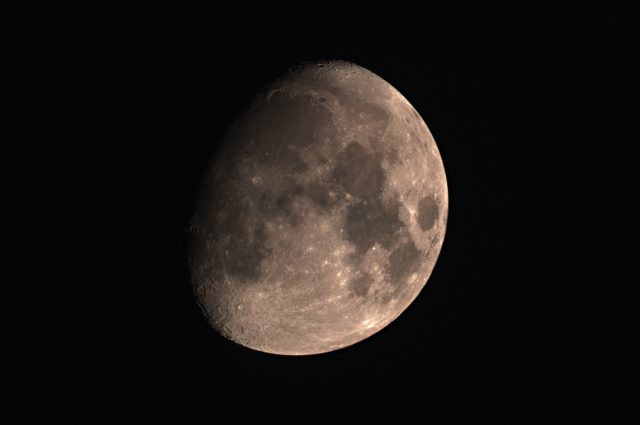
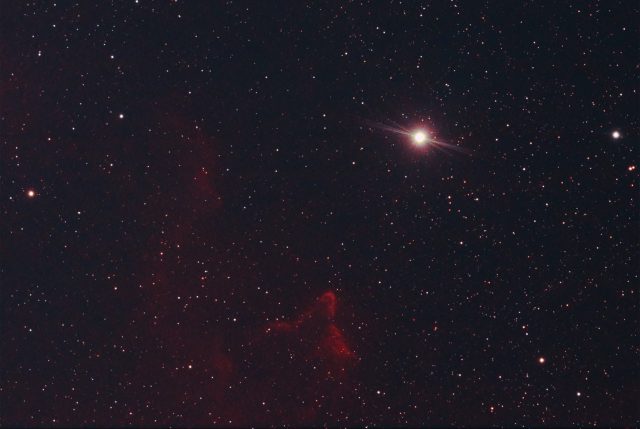
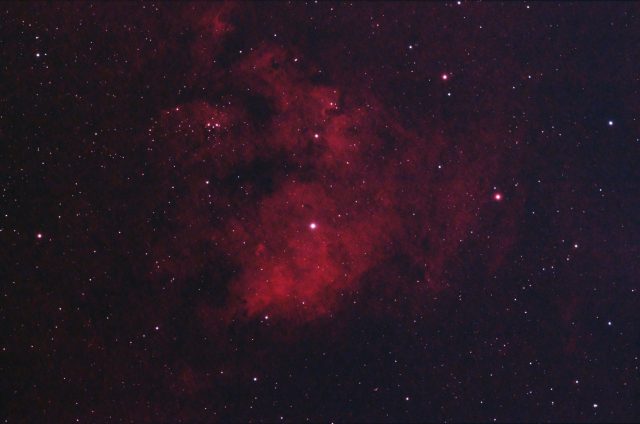
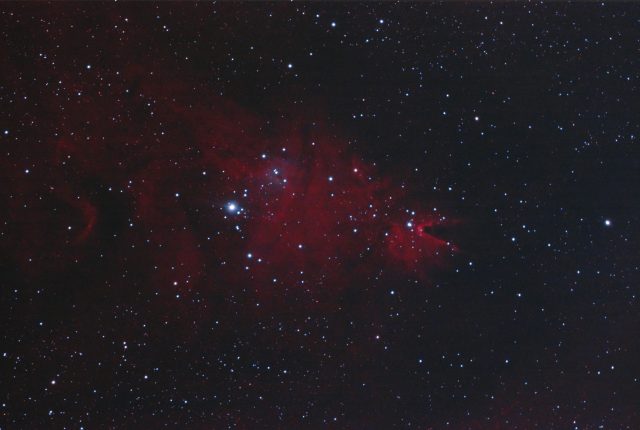
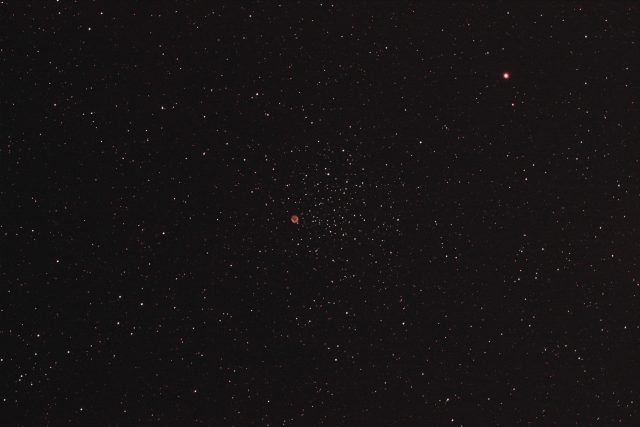
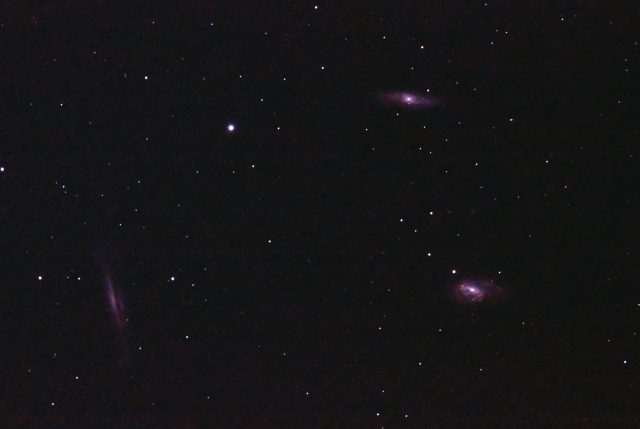
Six images bagged in one night, although a few need at least another nights worth of additional time. Big city light pollution was circumvented with an Optolong L-eNhance filter.
30 second sub-images for the DSO’s. The moon was 5 frames stacked in SharpCap 3.2. The Cone Nebula has 130 subs from last night and 63 from a previous session. I also shot M51, but it was only a few frames before twilight and was not really enough for a display image.
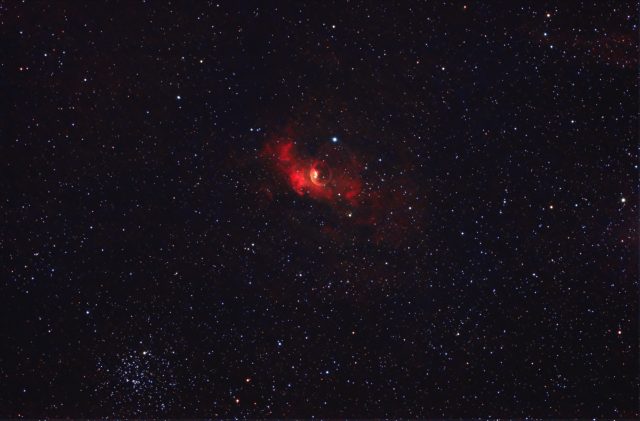
A mixture of 120×30 sec exposures taken with a L-eNhance filter and a mixture of 15, 30 and 1 minute exposures taken with a UHC filter. About an hour and 30 minutes total. The 120×30 set was at 30 gain and -20C.
I am starting to like the 30 gain setting, since it gives the best results with shorter exposures. Over 40 is too much noise and under 30 it is just too slow.
When the set began there was no matching dark to subtract, so I was using one at gain 20. I stopped after about 10 shots and took some darks and then restarted shooting. I’m glad I did since the amp glow was starting to show up bad on the right side of the frame. The new darks overcame it and the glow averaged out after a while of LiveStacking with ShapCap 3.2.
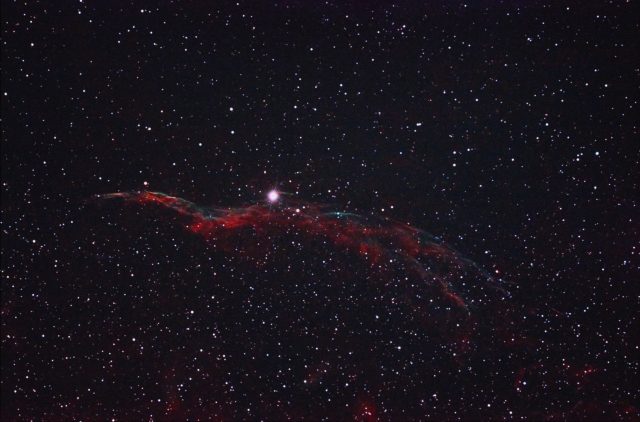
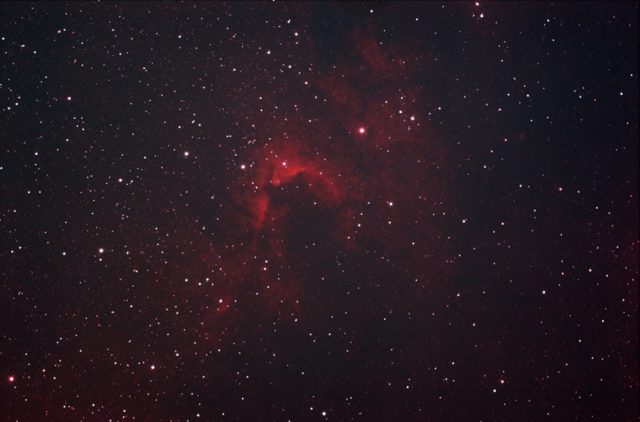
What luck! First light for new filter is the day I received it! Thanks to the clouds for staying away. What I wanted to test was my new Optolong L-eNhance dual-band nebula filter, which is similar to the UHC filter I already own but with a narrower bandwidth and a more even color rendition across the frame than the cheap UHC one I’ve been using. I got to try it out before the run of good weather we’ve been having ended.
I was a able to test it on the Veil, which I recently imaged, and the Cave Nebula, which I had never shot before. I am very pleased with the results. Even color and illumination and better rejection of LP.
The Veil nebula was shot like I’ve been doing – 30 sec sub images at high gain. The Cave was long exposures of 4 minutes and I managed to get 26 subs. The Veil is a finished image and the Cave Nebula is still a work in progress. It seems the long exposure, 4 minute darks I used were not too good of a match and there are numerous hot pixel trails left to manually repair or clone out still left to do.
I also tried it on two reflection nebulae, one being the Running Man in the image below, and it was not as good as my UHC filter. I also tried one star cluster, M35, and it is the last image below. No galaxies yet, so I’m not sure how well it will work for those. Maybe next time I will have to try for one and find out.
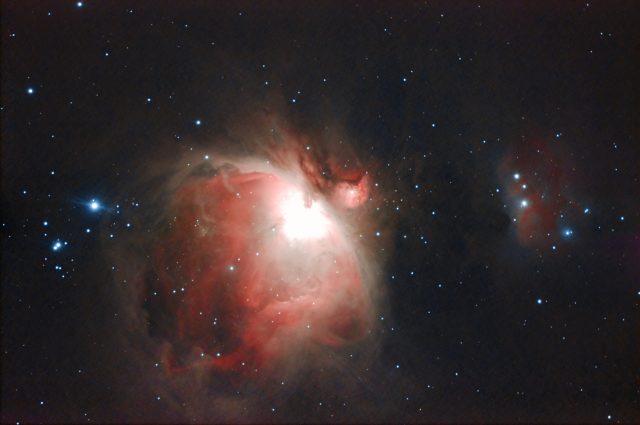
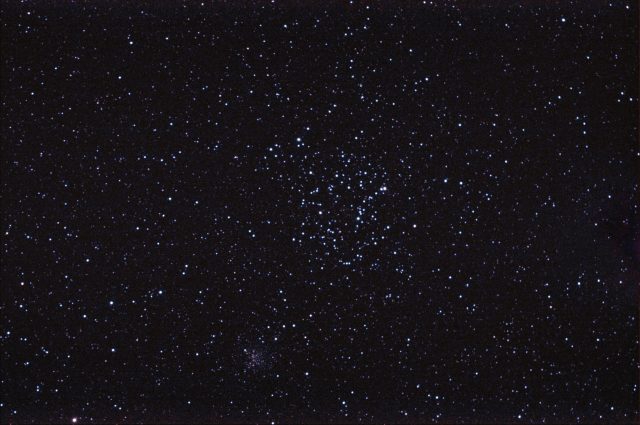
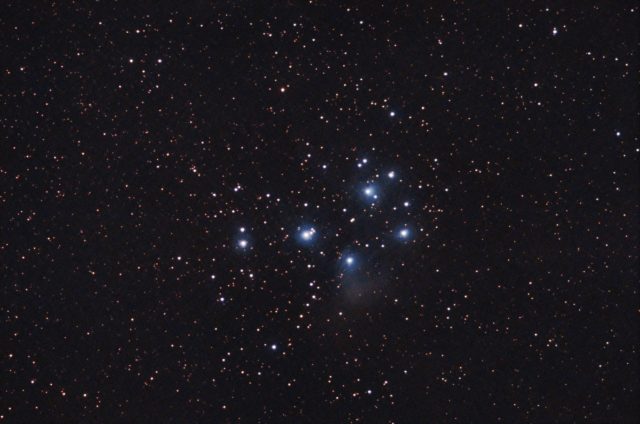
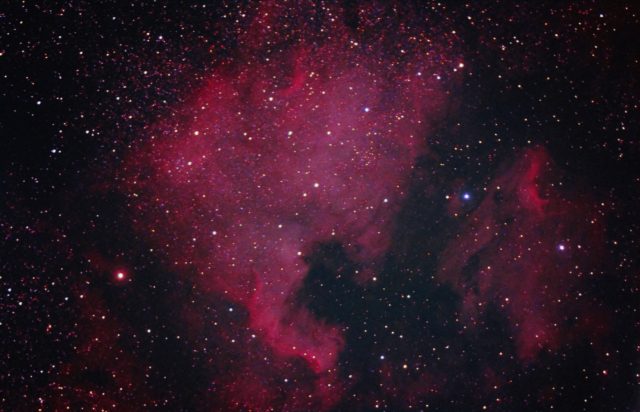

I bought the adapters needed to mate my new QHY183c camera to my Canon lenses. I tried it out with the 200mm F/2.8 telephoto. No way to control the F-stop diaphragm, since it needs a Canon camera to do that, so I had to shoot with it wide open. BTW, this was from the light polluted metro area I’ve been shooting from lately.
Since this is one of the cheaper lines of Canon lenses, it suffers from optical imperfections like astigmatism. That makes the red focus to a line up and down and blue and green focus to a line left to right. It really messes up the star shapes and there is no way to fix it except to stop the lens down to F/3.5 or higher. Oh, well…